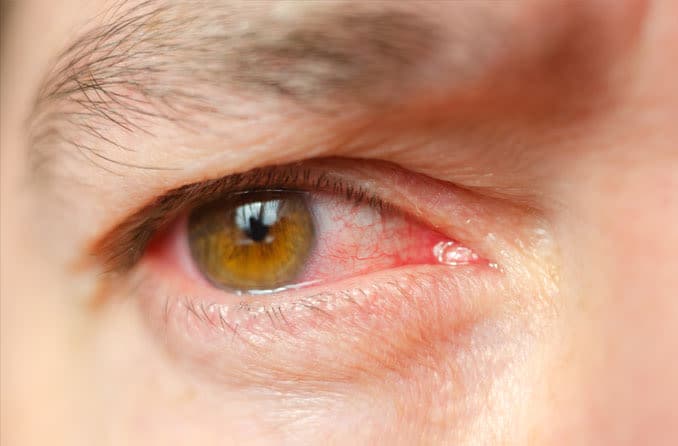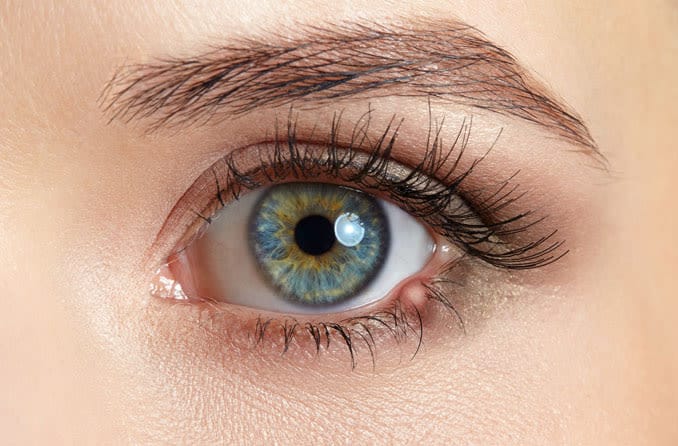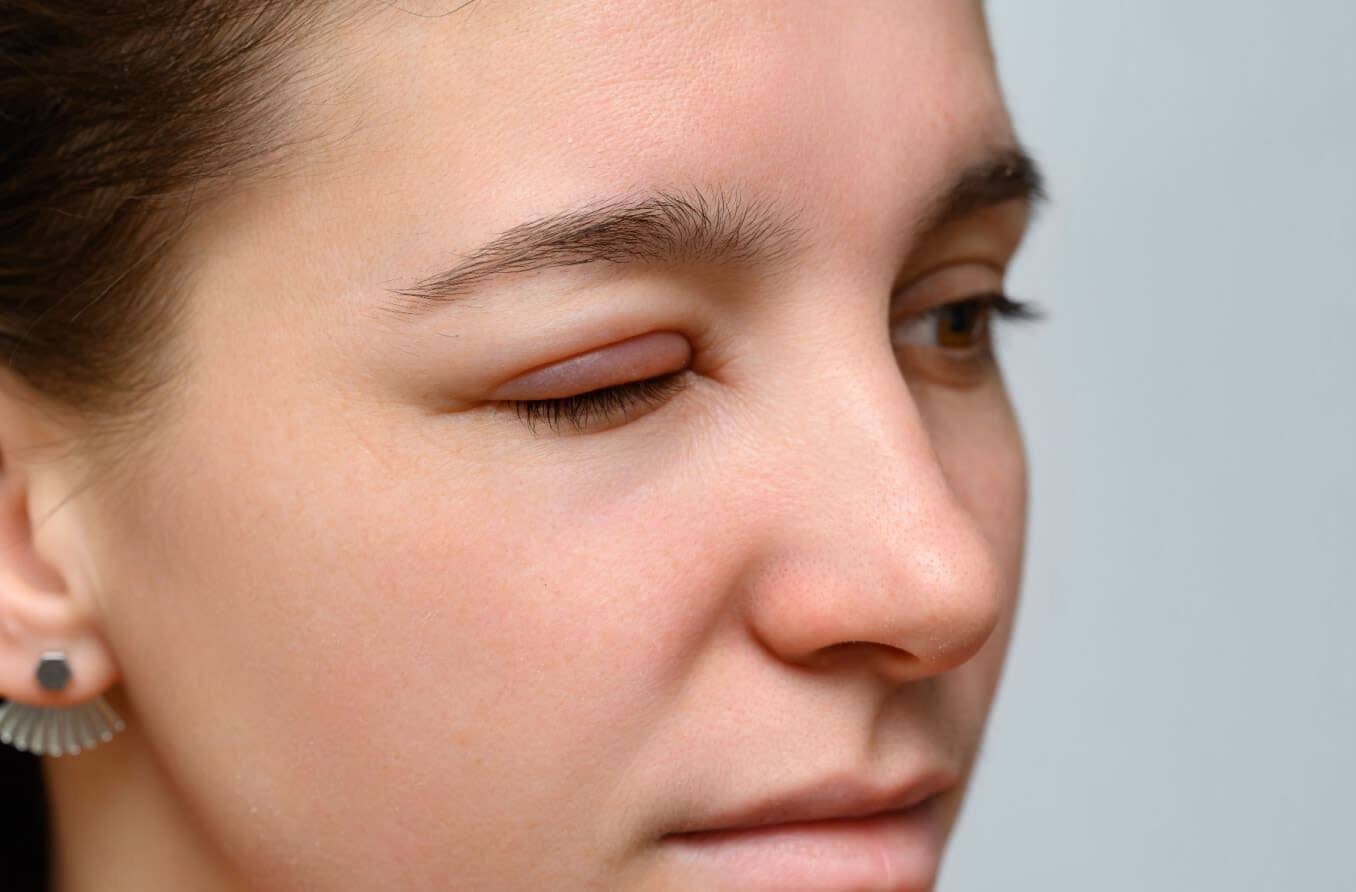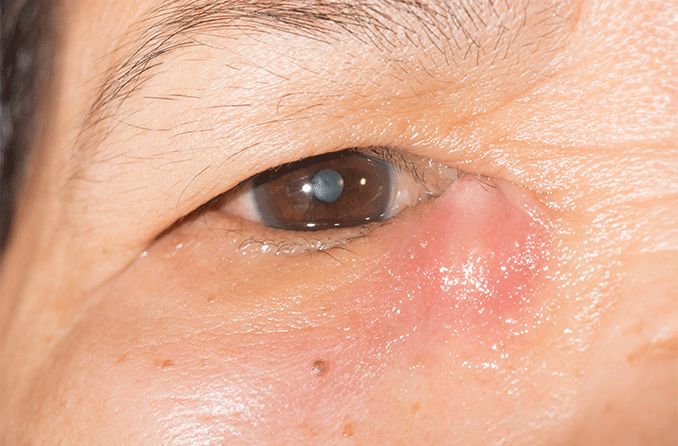When the Staphylococcus aureus bacteria enters the body, a painful infection known as staph can develop. The most common type of staph infection can affect the skin as well as the eyes. Although it is a single pathogen, staph can cause several different types of eye infections.
What part of the eye does staph affect?
A staph infection can impact several different parts of the eye, both on the inside and outside. It can take the form of a variety of eye infections, including styes, conjunctivitis and blepharitis.
The following parts of the eye can be affected by the Staphylococcus aureus bacteria:
- Eyelids
- Conjunctiva
- Corneas
- Tear ducts
- Tissue and fluids inside the eye
A staph infection in the eye can present as one of many types of eye infections, including:
- Hordeolum – Swollen and painful bumps in or on your eyelid, also known as styes
- Bacterial conjunctivitis (pink eye)
- Blepharitis – Inflammation of the eyelids
- Keratitis – Inflammation of the cornea
- Blepharoconjunctivitis – Inflammation of the eye(s) and eyelid(s)
- Dacryocystitis – Infection of the tear drainage system
- Endophthalmitis – Infection of the fluids or tissue inside the eye; this type of infection must be treated urgently to prevent vision loss
What causes a staph infection in the eyes?
A staph infection occurs in the eye when Staphylococcus aureus bacteria enter the eye or otherwise come into contact with it. So, how might this happen?
Staph bacteria commonly live on your skin and inside your nose. While they usually don’t pose a threat, they can potentially cause harm to your eyes if they grow in number or enter the eye. For example, if the bacteria enter one of the eye’s meibomian glands (which line the eyelids and produce the eye’s oily layer of tears), an internal hordeolum (stye) may result.
Some ways in which a staph infection can occur in (or on) the eyes include:
- Rubbing your nose, where staph bacteria are located, and then immediately rubbing your eyes
- Exposure of your eyes to staph bacteria, which can clog and infect the meibomian glands (internal hordeolum) or tear ducts (dacryocystitis)
- Having ocular surgery, the risk of exposure and the trauma of the surgery can make your eyes more prone to bacterial spread
What are the symptoms of staph infections in the eye?
Depending on the type of infection caused by staph bacteria, you may experience a variety of symptoms, such as:
- A painful, raised red bump in or on the eyelid (stye)
- General discomfort in the eyes
- Redness
- Swelling
- Itching
- Burning or stinging
- Dryness
- Watery eyes
- Yellow or green eye discharge
- Light sensitivity
- Blurry vision
It’s important to contact your eye doctor immediately if something doesn’t feel right in or on your eyes. Staph bacteria can be dangerous to your vision if it is not assessed and treated quickly. (And it’s best to get your eyes professionally looked at, even if the condition you are experiencing is not actually staph-related).
Are staph infections on the eyelid contagious?
Staph infections on the eyelid, or external styes that occur at the base of an eyelash, can technically be contagious, but it is rare.
Simply being around someone who has a stye does not put you at risk for getting one — your eye has to come in direct contact with the staph bacteria for it to be transferred. This could happen if the person who has the stye touches their eye, then touches a surface like a doorknob or sink faucet, and then you touch that contaminated surface and immediately touch your eye.
You can also pick up the bacteria by using an unwashed towel or washcloth on your face that a person with a stye previously used on their face.
Finally, it’s possible to transfer stye bacteria through contaminated eye makeup and eye makeup brushes. If the bacteria sits on a brush and that brush is then used to apply eye shadow around your eyes, it can put you at risk of developing an infection (or multiple styes if you already have one).
The risk of spreading bacteria is one reason it’s not recommended to wear makeup while you have an eye infection. Sharing makeup brushes, in general, is also not advised.
Keep in mind also that some types of staph eye infections are highly contagious, especially bacterial conjunctivitis.
How to treat a staph infection in the eye
It’s critical to know exactly what kind of problem you’re having before beginning any treatment. That being said, make sure to see an eye doctor to talk about how to cure a staph infection in the eye. This will allow you to receive the proper treatment.
Some common treatments for a staph infection in the eye include:
Eyelid scrub
You can gently scrub your eyelids a few times a day with a damp, clean, warm washcloth to help ease symptoms associated with a staph infection. Use a clean cloth every time you do this and be sure to wash and dry it thoroughly after each use.
SEE RELATED: Eyelid wipes and cleaning
Antibiotic ointment or eye drops
Antibiotic ointment or eye drops (especially those that contain bacitracin) can be helpful in the healing process of a staph infection. Your eye doctor may prescribe either for your condition if necessary.
Warm compresses
A little warmth can go a long way. Use a warm washcloth, hot water bottle or heating pad on the affected area for 20 minutes, up to four times a day as your symptoms persist. Be sure to keep your eyes closed while you do this.
Over-the-counter pain relief
You may feel pain or discomfort with a staph infection of the eye(s). This is usually treatable with an over-the-counter option such as acetaminophen (Tylenol) or ibuprofen (Advil). Use these medications as directed on the product label while your symptoms last.
SEE RELATED: Can you “cure” pink eye naturally?
Preventing ocular staph infections
Pictures of staph infections in the eye can provide quite the warning for the uncomfortable condition that they are. But have no fear, there are some simple things you can do to prevent them:
- Wash your hands frequently and thoroughly with soap and water. This is especially important to do before and after touching your eyes for any reason (such as placing or removing contact lenses, applying makeup, etc.).
- When possible, avoid touching your eyes and face.
- Do not wear makeup while you have an eye infection. Also, do not share makeup or makeup brushes with others.
- Do not share towels, eye masks or any other article that comes into contact with someone else’s face or eyes, especially if they have a stye.
- Keep your eyelids clean. This can be done with clean cotton swabs or by gently cleansing the area with tear-free baby shampoo and warm water.
Additionally, it’s important to promote healthy vision by seeing an eye doctor once a year for a comprehensive eye exam. This is the best way to identify any conditions you may have and keep your vision prescription up to date.








